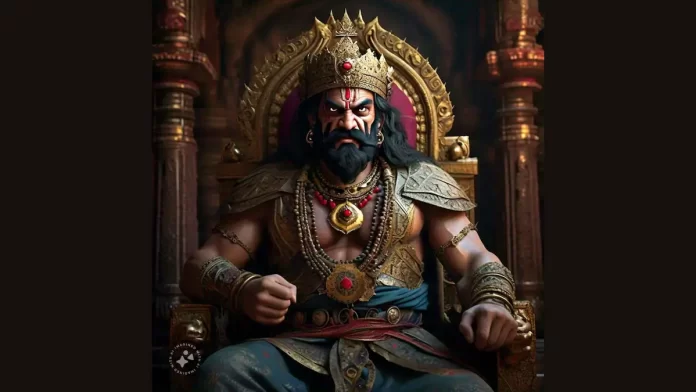Harsha, a renowned king of the 7th century, holds a distinguished place in Indian history. His reign is often highlighted for its patronage of the arts, religion, and learning. Harsha’s devotion to Buddhism, particularly Mahayana Buddhism, was profound, and his efforts to propagate its doctrines were remarkable.
One such notable event was the grand assembly he convened at Kanauj. The assembly, however, also unveiled a lesser-known and darker facet of Harsha’s reign, where his tolerance was tested to its limits, resulting in a severe backlash against Brahmanas.
The Grand Assembly at Kanauj
Harsha’s grand assembly at Kanauj was a monumental event aimed at promoting Mahayana Buddhism. As a devout Buddhist, Harsha spared no effort in ensuring that this assembly would be remembered for its grandeur and religious significance.
The assembly was attended by a diverse group of people, including Hsuan Tsang, the Chinese pilgrim and scholar, the Kamarupa ruler Bhaskaravarman, kings of twenty states, and several thousand priests from different sects. This eclectic mix of attendees underscored the assembly’s importance in the religious and political landscape of the time.
To accommodate the vast number of attendees, two thatched halls, each capable of holding 1,000 persons, were constructed. However, the centerpiece of the assembly was a massive tower, within which stood a golden statue of the Buddha, as tall as Harsha himself.
This statue symbolized Harsha’s deep reverence for the Buddha and his teachings. The king personally worshipped the statue and hosted a public dinner, emphasizing his commitment to Mahayana Buddhism.
Theological Debates and a Deadly Conspiracy
The discussions at the assembly were initiated by Hsuan Tsang, who eloquently expounded the virtues of Mahayana Buddhism. His challenge to the audience to refute his arguments remained unanswered for five days, highlighting the strength and persuasiveness of his discourse. However, this also exposed the deep-seated animosity and rivalry among different religious sects.
A conspiracy soon brewed among Hsuan Tsang’s theological rivals, who plotted to take his life. According to RS Sharma, when Harsha learned of this nefarious plot, he issued a stern warning, and threatened to behead anybody causing Hsuan Tsang the slightest harm. This would indicate that Harsha was not as tolerant as he is painted.
Harsha’s unwavering protection of Hsuan Tsang demonstrated his deep respect and admiration for the scholar.
The Fiery Assassination Attempt and Harsha’s Ruthless Response
The assembly took a drastic turn when the great tower suddenly caught fire, and an assassination attempt was also made on Harsha’s life. The attempted assassination and arson were shocking, signaling a severe breach of trust and safety at the assembly. In the aftermath, Harsha’s response was swift and severe. He arrested 500 Brahmanas, banishing most of them and executing a few.
This harsh response starkly contrasts with Harsha’s generally tolerant and benevolent image. It revealed the extent to which he was willing to go to protect his religious beliefs and the people who propagated them. The incident suggests that Harsha’s tolerance had its limits, particularly when faced with threats to his life and the lives of those he held in high regard.
The Assembly at Prayag and Harsha’s Generosity
Following the tumultuous events at Kanauj, Harsha convened another grand assembly at Prayag. This assembly was attended by all the tributary princes, ministers, nobles, and other dignitaries. Once again, an image of the Buddha was worshipped, and Hsuan Tsang delivered discourses on Mahayana Buddhism.
At the end of the assembly, Harsha demonstrated his generosity by making substantial donations. According to tradition, he gave away everything he possessed, except for his personal clothing. Hsuan Tsang, who was deeply impressed by Harsha, spoke of him in glowing terms. He described Harsha as kind, courteous, and helpful, noting that the king facilitated his visits to various parts of the empire.
Relevance and Consequences
The events at the Kanauj assembly highlight the complex interplay of religion, politics, and personal beliefs during Harsha’s reign. Harsha’s severe actions against the Brahmanas underscore the tensions between different religious communities and the extent to which a ruler could go to protect his faith and authority.
Harsha’s commitment to Mahayana Buddhism and his protection of Hsuan Tsang reflect the deep connections between Indian and Chinese Buddhism during this period. Hsuan Tsang’s accounts provide valuable insights into Harsha’s character and reign, revealing a ruler who was both generous and ruthless when circumstances demanded it.
In contemporary discussions on religious tolerance and state authority, Harsha’s actions serve as a historical example of the delicate balance between promoting religious beliefs and maintaining social harmony.
The events at Kanauj remind us that even the most revered rulers can resort to extreme measures when their beliefs and lives are threatened, raising important questions about the limits of tolerance and the use of power in safeguarding one’s convictions.
